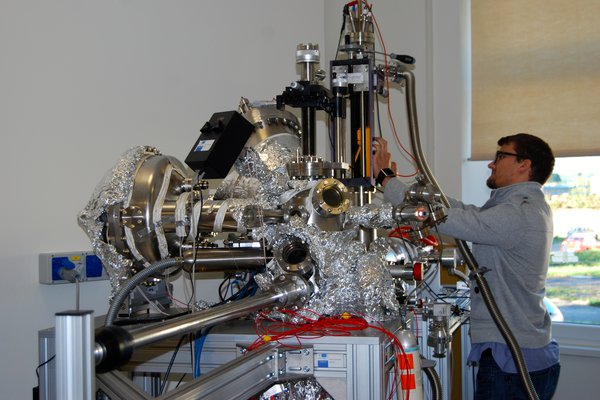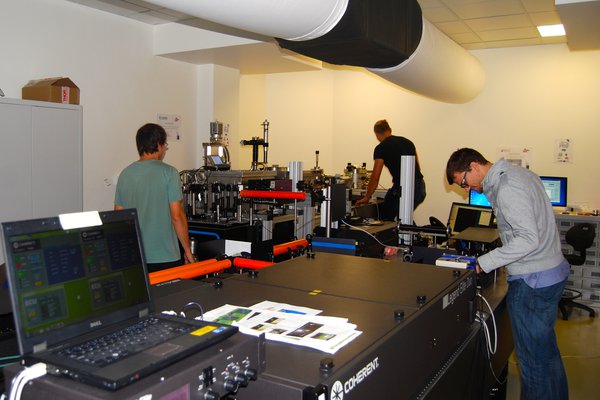About
Characterization methods based on the use of innovative light sources allow to get information on the basic processes occurring in matter at molecular and atomic level. Such information is essential for a large number of scientific and technological applications. Moreover, the theoretical and experimental studies aimed at designing and building new light sources based on quanto-mechanical principles (QMLS), and at optimizing their performance, are in itself a state-of-the-art field of research. Centers of research built around QMLS are at the crossroad between modern research, cutting-edge technology, high-level education training and business sector.
The laboratory of Quantum Optics (LKO), a research unit recently established at Nova Gorica University, will base its activity on the development and use of the CITIUS light source. The construction of CITIUS is funded by the program for Italy-Slovenia cross-border cooperation 2007-2013. The project relies on the collaboration between Italian and Slovenian public and private institutes and, in particular, on the tight collaboration between the University of Nova Gorica and Sincrotrone Trieste.
The CITIUS source is based on the generation of high-order harmonics of a laser, which are generated when the latter is brought into interaction with a noble gas. The use of CITIUS will allow the realization of a number of experiments, ranging from the chemical study of samples in solid or gas-phase state, to biology and medicine. Aim of the latter experiments is to characterize the behavior of samples containing Phthalocyanines, which are aromatic macrocyclic compound used for photo-dynamic cancer therapy.
The development of CITIUS will proceed in parallel with that of FERMI@Elettra, the new free-electron laser under commissioning at Sincrotrone Trieste. Presently, the two sources produce coherent light in a similar wavelength range (i.e., 60-20 nm). In the near future, a second commissioning phase of FERMI will start, whose aim is to produce light in wavelength range 20-4 nm. The research unit of LKO will work in close collaboration with the team operating on FERMI. Theoretical studies are also foreseen in the framework of long-range interacting systems.
The group activities will also concentrate on the characterization of new materials with synchrotron radiation. Such a characterization will be mainly dedicated to to the analysis of atomic and molecular structure of new materials with x-ray absorption methods EXAFS (Extended X-ray Absorption Fine Structure) and XANES (X-ray Absorption Near Edge Structure).
The measurements are performed at the synchrotron radiation facilities of HASYLAB at DESY in Hamburg, ESRF in Grenoble, ELETTRA Sincrotrone in Trieste and SOLEIL, Paris, France. The analysis can be applied to crystalline, nanostructured or amorphous materials, liquids, molecular gases, and even to molecular complexes in different plant tissues on sub-cell level. EXAFS is often the only convenient way to study the arrangement of atoms in materials without long-range order, where traditional diffraction techniques cannot be used.
We will collaborate with several Slovene and foreign material science, physics, chemistry, biology, pharmacology, and environmental research laboratories and institutes for the preservation of cultural heritage. In this way we will provide to partner laboratories access to the advanced technology for material characterisation with synchrotron light. So far we have contributed to the development of several technologically important materials, for example microporous catalysts, cathode materials for Li-ion batteries and other nanostructured materials, superconducting and ferroelectric ceramics, protective coatings, and macromolecules used in pharmacology. We are actively involved in the development of new solutions for environmental protection in cases of pollution with heavy metals, and in a project for the preservation of ancient manuscripts.
In parallel we perform the experimental study of multielectron photoexcitations in free and bound atoms to obtain information on the collective motion of electrons in the atomic system. Our results provided a significant experimental and theoretical contribution to the interpretation of the exact atomic absorption background in EXAFS spectra and thereby have helped improve the accuracy of the structural analysis with this method.


